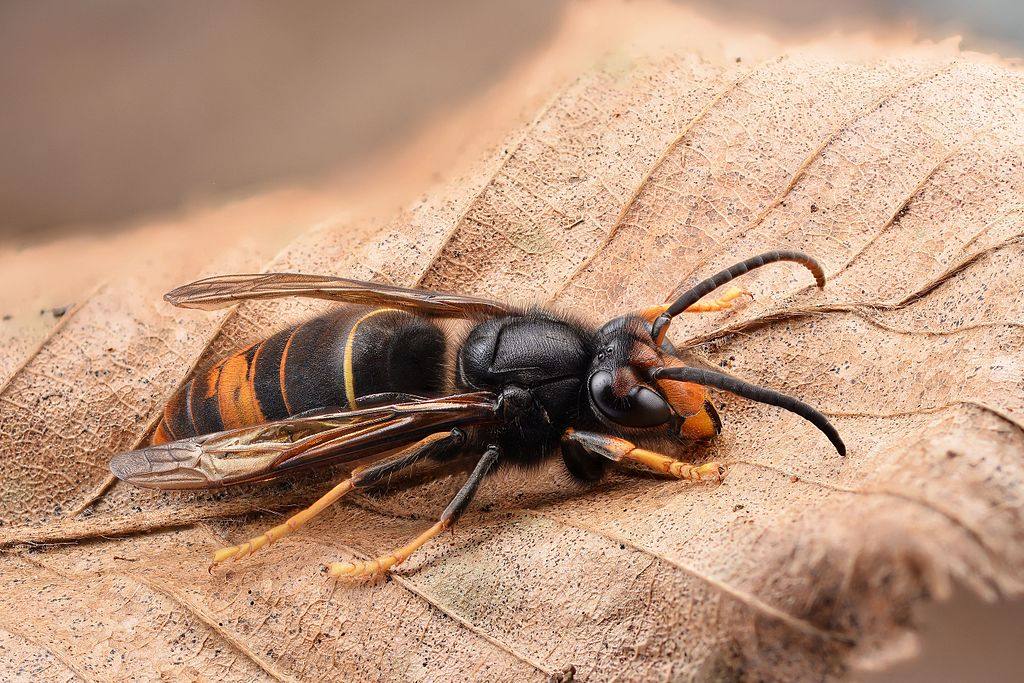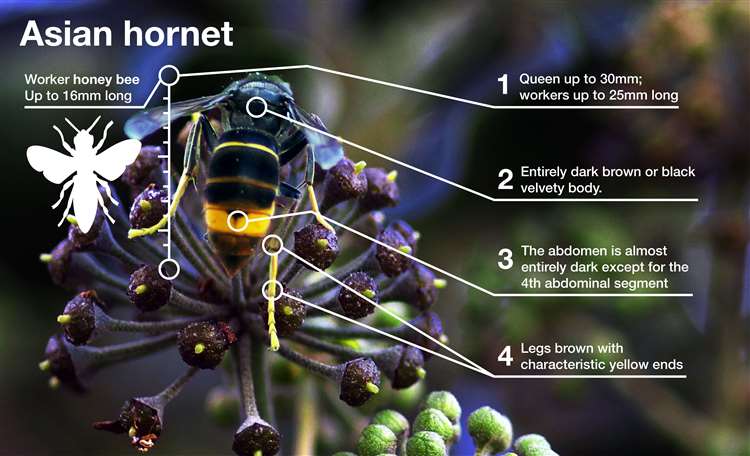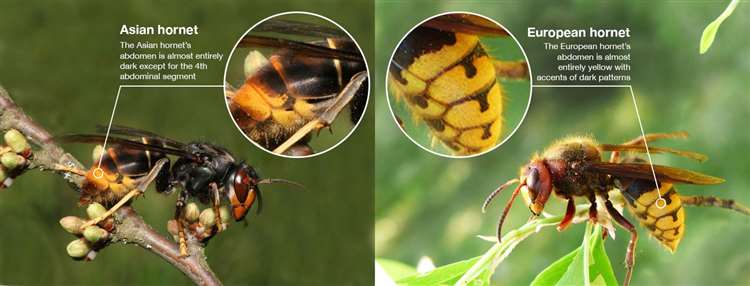According to the Natural History Museum, there are more than 7,000 species of wasp living in the UK, and a few of them are sometimes mistaken for the invasive Asian hornet.
European hornet
The European hornet (Vespa crabro) is native to Britain and is larger than the Asian hornet. Compared to other species, European hornets are quite docile.
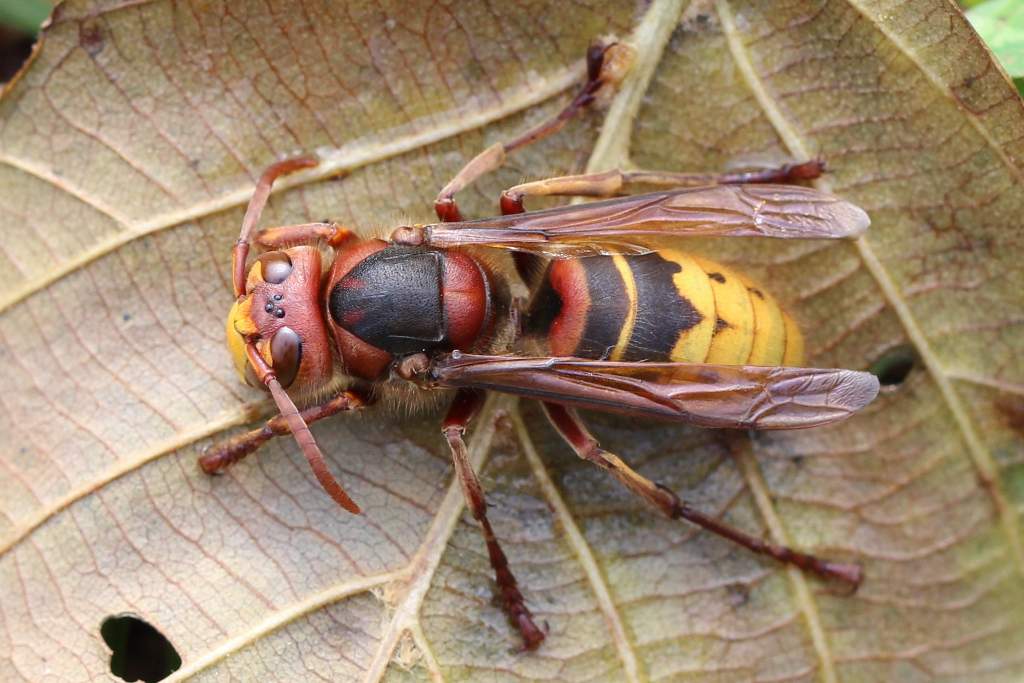
European hornet (Vespa crabro)
© AfroBrazilian WikiMedia Commons (CC BY-NC 2.0)
Median wasp
The median wasp (Dolichovespula media) is the largest non-hornet wasp native to Britain. They have yellow markings on their thorax, unlike the invasive hornet, as well as more extensive yellow on the abdomen.
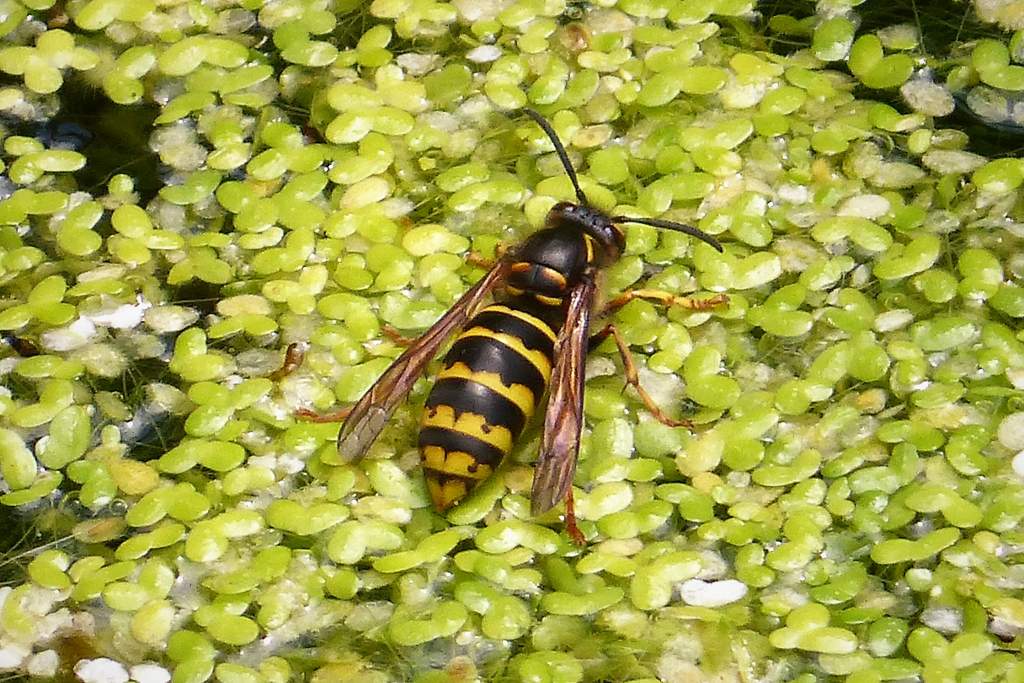
Median wasp (Dolichovespula media)
© Rudolphous WikiMedia Commons (CC BY-NC 2.0)
Giant wood wasp
The giant wood wasp (Urocerus gigas) is larger than the Asian hornet and is a relative of the wasps and can be found near pine woods, or places where pine timbers are used.
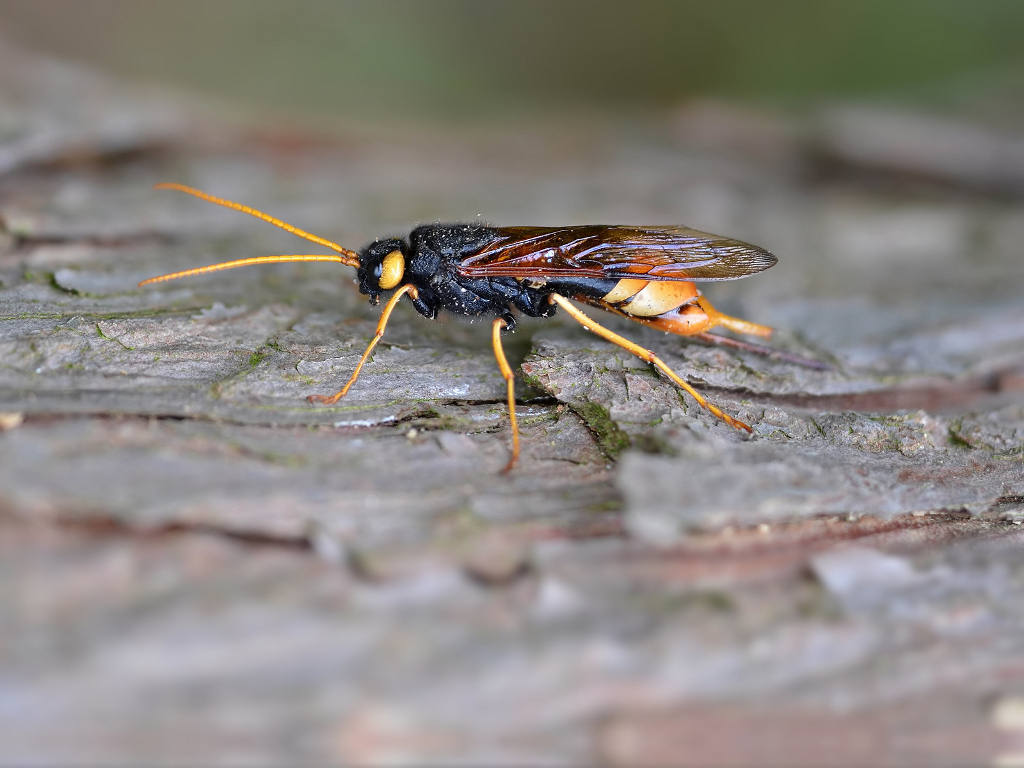
Giant wood wasp (Urocerus gigas)
© bathyporeia Flickr (CC BY-NC 2.0)
Hornet mimic fly
The hornet mimic hoverfly (Volucella zonaria) is also known as the ‘belted hoverfly’. It is the largest hoverfly species in the UK. As its name suggests, it is an excellent mimic of the hornet, but is harmless to humans.
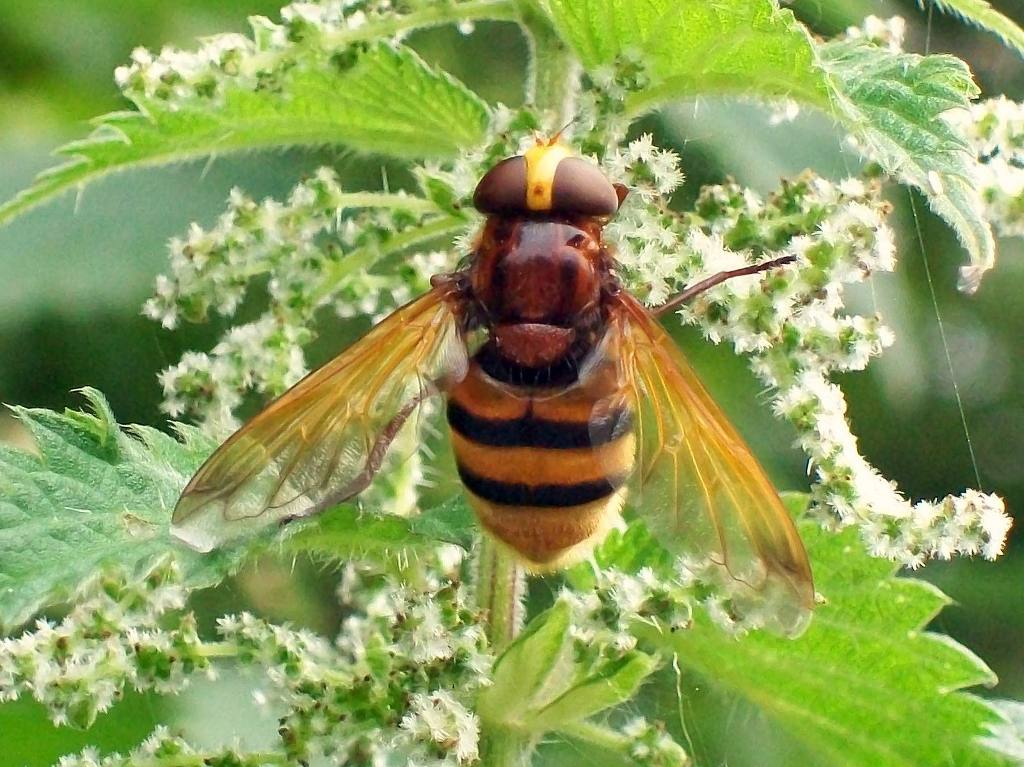
Hornet mimic hoverfly (Volucella zonaria)
© Peter O’Connor Flickr (CC BY 2.0)
Hoverflies
Hoverflies, also called flower flies or syrphid flies, make up the insect family Syrphidae. As their common name suggests, they are often seen hovering around flowers.
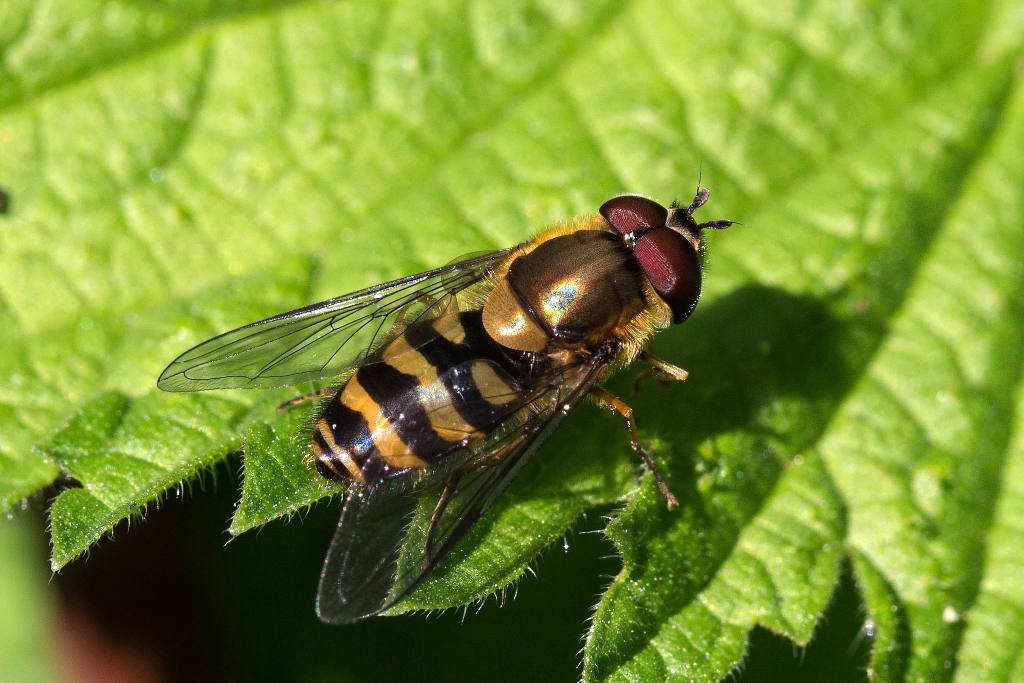
Hoverfly (Syrphidae family)
© Mark Robinson Flickr (CC BY-NC 2.0)

